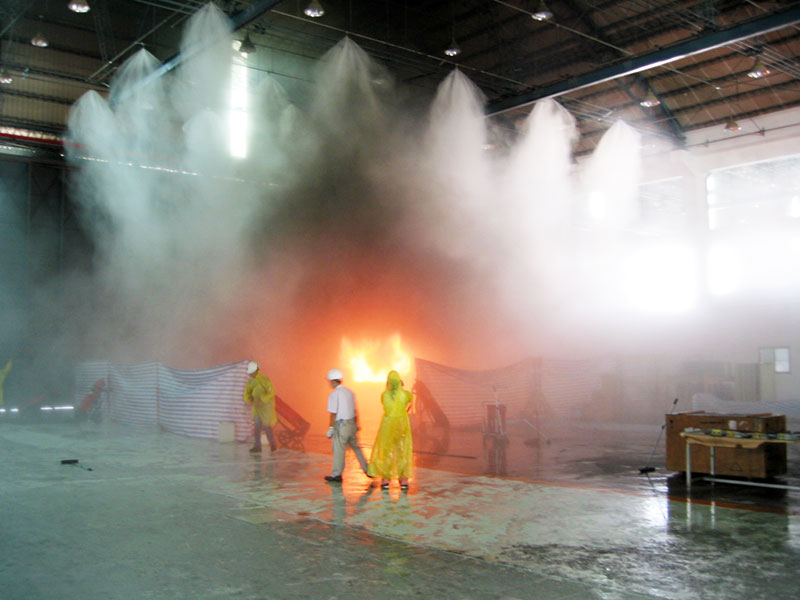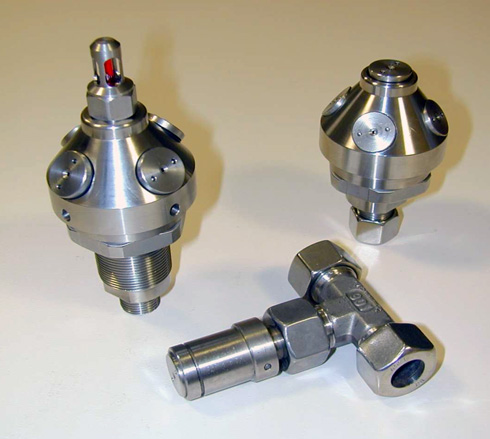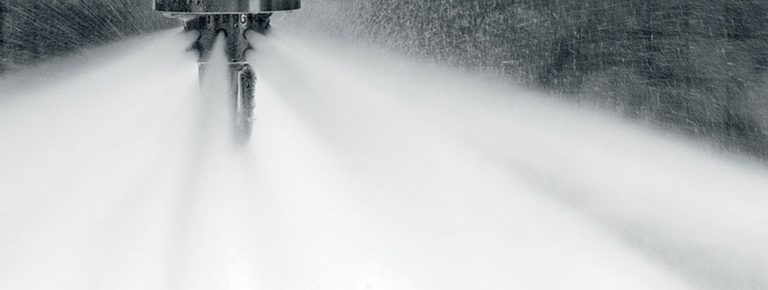

WATER MIST SYSTEM
Water mist fire suppression systems use very fine water droplets under pressure to control, suppress, or extinguish a fire by evaporating and cooling the flame and surrounding area. Water evaporation also creates an environment in which oxygen is displaced, which aids in the suppression of the fire.
A fire is controlled by high-pressure water mist penetrating it in liquid form, which causes cooling and evaporation.
Water mist fire suppression is highly effective, using much less water than regular sprinklers while working just as well or better. It minimizes both fire and water damage and is safe for people. Compared to gas systems and traditional sprinklers, it activates quickly, works on many types of fires, and is non-toxic and eco-friendly.

What is the Water Mist System in Fire Protection?
A water mist system is a fire protection system that uses very fine water sprays. The small water droplets allow the water mist to control, suppress and extinguish fires by:
- cooling both the flame and surrounding gases by evaporation
- displacing oxygen by evaporation
- attenuating radiant heat by the small droplets themselves
Water mist systems are an efficient fire protection solution that use special nozzles to produce fine mist, helping to stop fires early or slow their growth. They cool and control Class A fires and help prevent re-ignition in Class B and F fires. Governed by NFPA 750, these systems are designed, installed, and maintained to strict standards. They come in low, intermediate (175–500 psi), and high-pressure (500+ psi) types. Smaller water droplets are better for high-heat fires, while larger ones work well on lower-temperature fires—each suited to specific fire risks.
Nozzle & Water Types

Nozzles in water mist systems can be deluge-type, which are always open and release water when it flows, or automatic nozzles, which have a thermal element that bursts when heated, similar to sprinklers. These systems typically use stainless steel pipes to avoid rust, which could clog the nozzles. They also use tap water to prevent corrosion while the system is idle, ensuring the water stays effective when needed.
Droplet Sizes
Water mist systems produce droplets smaller than 1,000 microns, about the thickness of a dime. In contrast, sprinkler systems create droplets around 5,000 microns. Intermediate pressure systems make droplets of 300-500 microns, while high-pressure systems produce droplets as small as 50-150 microns. The smaller droplets increase the water’s surface area, allowing it to better absorb heat and fight the fire more effectively.
Why Water Mist System?

The NFPA 750 defines three pressure regions for water mist-generating technologies: low, intermediate and high-pressure systems.
The use of water mist fire suppression, when compared to the use of gaseous agents and traditional sprinkler systems, has revealed advantages such as:
- Immediate activation
- High efficiency in the suppression of a wide variety of fires
- Minimized water damage
- Environmentally sound characteristics
- No toxic problems
- As water mist both cools the fire and removes the oxygen, it results in quicker fire fighting
- The reduced amount of damage often means less downtime, resulting in much lower costs
High water mist system consistently delivers:
- Better penetration into the seat of the fire
- Superior coverage of the protected volume
- An improved cooling effect from better mixing of gases and high evaporation rate
- Lower overall system weight
- Less water consumption
AITO has a team of qualified engineers who possess the technical expertise and capabilities required for the role.


